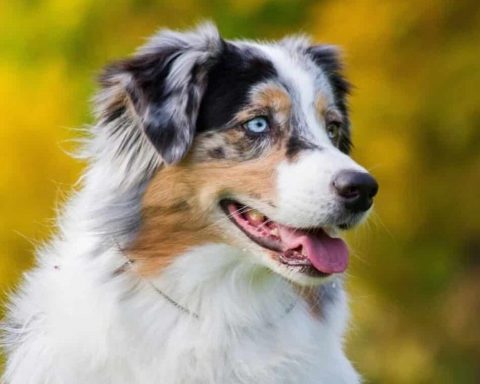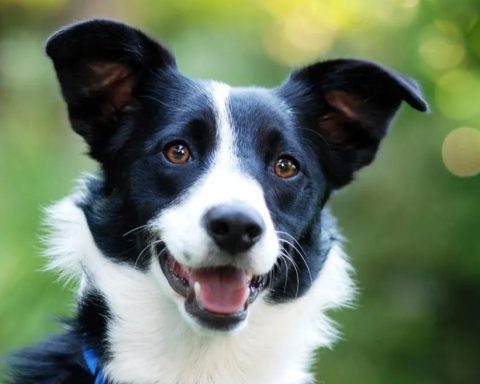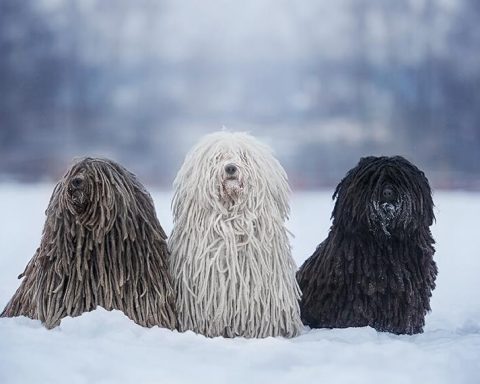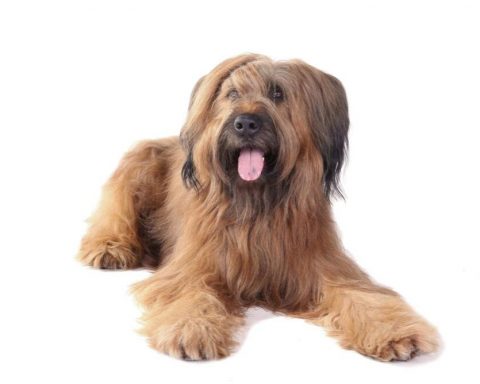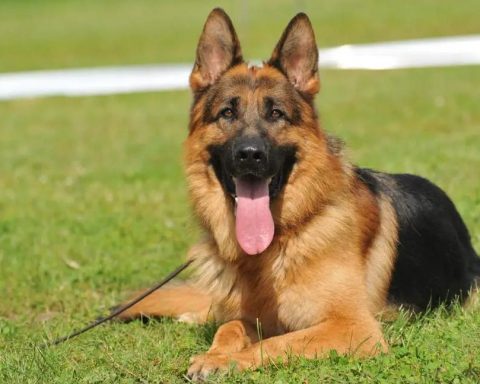The Cormon is a special and very memorable, noble, courageous and well-built breed.
The Cormon is tall, muscular, well-boned and well-built, covered in a thick, corded white coat.
As a working dog, the Cormon lived outdoors year-round in both urban and suburban settings, and his coat helped him blend in with the flock and withstand extremely harsh weather or predators.
NATURE AND CHARACTERISTICS: The Cormon is a sheep guardian dog, but not a sheepdog. Originally bred in Hungary to protect large numbers of livestock in vast meadows, the Komunds will guard a flock of sheep very carefully without any outside help and without any orders from their owners. A mature, experienced Komond will try to stay as close as possible to what he is required to guard, whether it be the sheep or the owner’s family, and he will not stray too far away when he is in pursuit of a hunt, and is characterized by his inability to get lost.
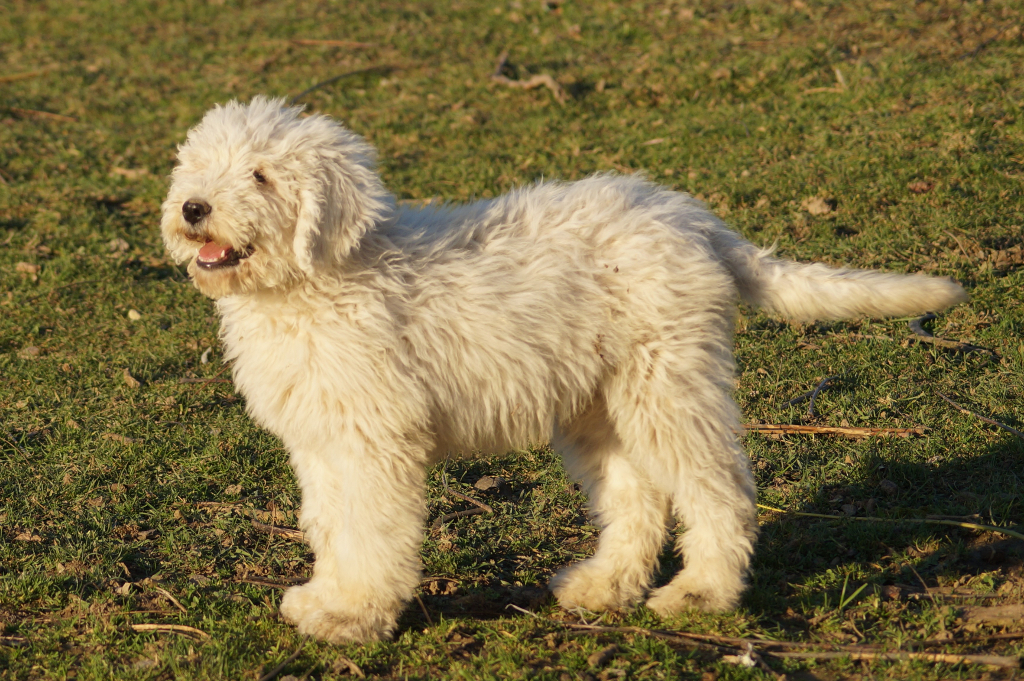
Although, he is very sensitive to his owner’s demands, over-training will only create a stubborn, unhappy Cormon. Reserved with strangers, the Komond will love and focus on his owner’s family or the flock he cares for with selflessness and forgetfulness, and will rise to the occasion when the family or flock is attacked.
Combining love of family and flock with devotion to duty, the Cormon becomes the best guardian of the family or flock, alert, courageous and very loyal.
Origin
Hungary
Body type
Males stand about 27.5 inches or more at the shoulder; females stand about 25.5 inches or more at the shoulder, males weigh 100 pounds or more; females weigh 80 pounds or more, and mature dogs should have plenty of bone and muscle.
Tallness is important, but type, quality, proportionality, movement and sturdiness are also very important, and there is no reason why any of these should be sacrificed for size alone. The proportions of the body are such that length is slightly greater than shoulder height. Less than the minimum height is a defect.
Head
The head is huge.
The length of the head (the distance from the posterior occiput to the nosepiece) is about 2/5 the height of the shoulder, and the skin around the muzzle and eyes is dark in color.
Eyes: Medium sized, almond shaped, not too deeply positioned. Eyes are dark brown in color with gray or black lids. Light-colored eyes are a defect; blue eyes are a disqualification.
Ears: Long triangular in shape with slightly rounded tips. The roots of the ears are moderately positioned and their length extends to the inner corners of the eyes on both sides. Standing ears or ears that tend to stand upright are defective.
Head: The head is broad, nicely rounded between the eyes, with a well-defined posterior occiput and a moderate stop.
Muzzle: The muzzle is wide and thick, with a truncated tip. The length from the inner corner of the eye to the rhinoscope is 2/5 of the length of the head, and the outline of the muzzle is straight and parallel to the top of the head. Mandible very broad and well developed. The lips are tight and black in color. The ideal gums and upper jaw are dark or black in color.
Nose: Nasal mirrors wide, at right angles to the upper outline of the muzzle. Nostrils are wide with black nasal mirrors; dark gray or dark brown nasal mirrors are undesirable but acceptable. Flesh-colored nasal mirrors are out of character.
Bite and Harmony: A clipped bite is best, a pincer bite is acceptable. A protruding upper jaw bite or a protruding lower jaw bite is a defect, as are missing teeth. Three or more missing teeth are disqualifications.
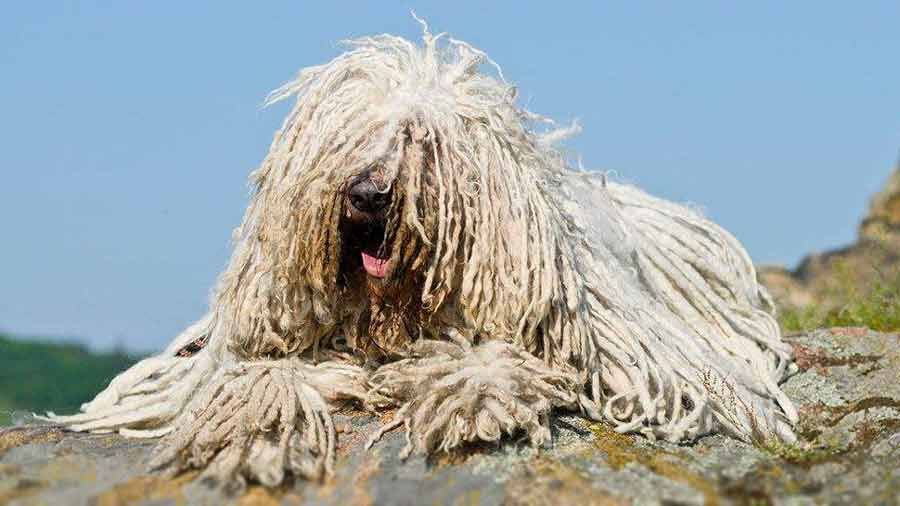
Neck
Well-muscled, medium length, slightly arched, without flab, so that the head is erect.
Backline
The back is horizontal and firm.
Body
Strong, deep-chested, well-muscled and as wide as possible in proper proportion. The chest is broad and well-muscled, with the abdomen tucked back slightly. The hips are wide, well muscled and sloping slightly towards the root of the tail. A body that is too soft or lacks good musculature is a defect.
Tail
Looks like an extension of the rump, drooping and extending in length to the fly joints. Slightly curved upward, the tip of the tail may or may not be curved to one side. Although most of his tail will protrude when he is moving and when excited, it should not be higher than the plane of the back. A short or broken tail is considered a defect.
Forequarters
Shoulders properly sloped. The forelegs are straight, well boned and muscular. Regardless of the side from which the leg is viewed, the leg imagines a vertical column. Forearms are close to the body with no slack in the elbows.
Foot claws
Firm, larger is better, toes close and rounded arches. Foot pads are firm, flexible, and black or gray. Although, light colored toenails are permissible, black or gray toenails are preferable.
Hindquarters
The hindquarters are as solid as steel, with extremely well-developed muscles covering sturdy bones. The legs are straight when viewed from behind. The hind knees are moderately inclined. Wolf claws must be removed.
Coat
A dense, protective coat is typical of this breed.
The coat of young dogs is relatively soft, but appears to be close to being rope-like and curly. The young dog’s coat, or overcoat, consists of a number of short “cords” close to the skin, which are inconspicuous and sometimes appear to be clumped together to give the appearance of a layer of down on top of the cords. The coat of an adult dog has two layers, a soft, dense, wiry undercoat like that of a puppy, and a rough, uneven, curly outer coat. The rough coat is trapped in the soft undercoat. The coat is long-lasting, strong and corded, and feels like felt to the touch.
Adult Komunds are completely covered with a large, spiky, ropey coat.
One thing to keep in mind is that the length must meet the functional needs of the Cormon’s coat. A young dog with a short coat will not be cited as a defect. A straight or silky coat is considered a defect, and a coat that has not grown a corded coat by the time it reaches two years of age is considered a disqualification. A short, smooth coat on the head and legs is a defect.
Color
The color is white, but not always. Sometimes a small amount of cheese color or light yellow appears in puppies, but the color fades as they mature. Ideally, the skin should be gray; pink skin is acceptable but not ideal.
With the exception of puppies that develop a small amount of cheese color or light yellow, any color other than white is a disqualification.
Gait
Easy, relaxed and harmoniously smooth. The Cormon has a large stride with very light and agile paws. At the trot, the head is slightly forward. The preceding descriptions are the characteristics of the ideal Cormon, and if there is any deviation from these descriptions, points should be deducted according to the degree of deviation, and disqualification will be considered in the event of serious deviations from the descriptions in some parts.
Disqualification
Orchid eyes. Flesh-colored noseglasses. Three or more missing teeth. A ropey coat that has not grown in by two years of age is considered out of character. The coat on the head and legs is short and smooth. Any color other than white except for a small amount of cheese or light yellow appearing in puppies.
Standard Adoption Date: June 13, 1994
Standard Implementation Date: July 31, 1994
